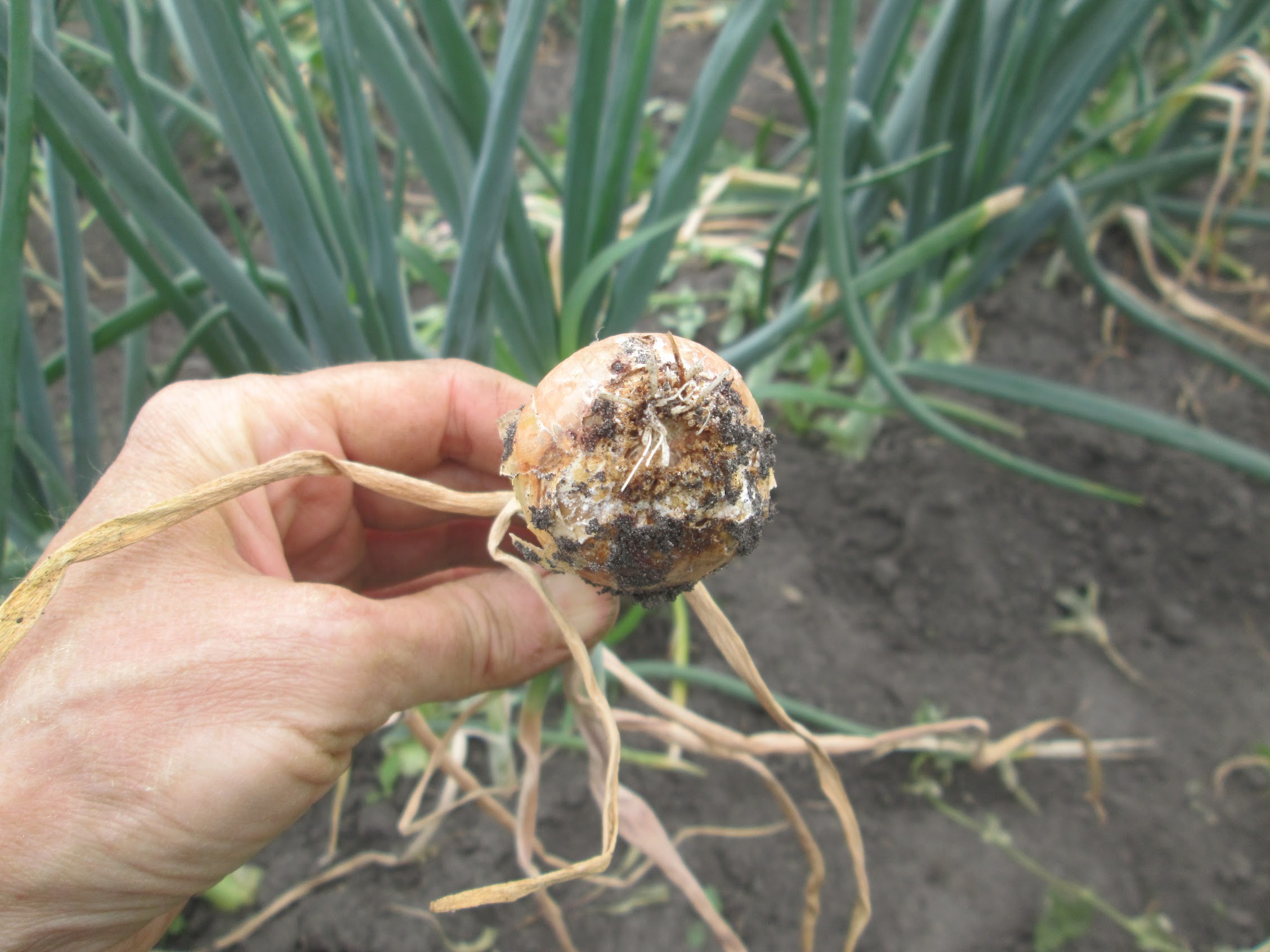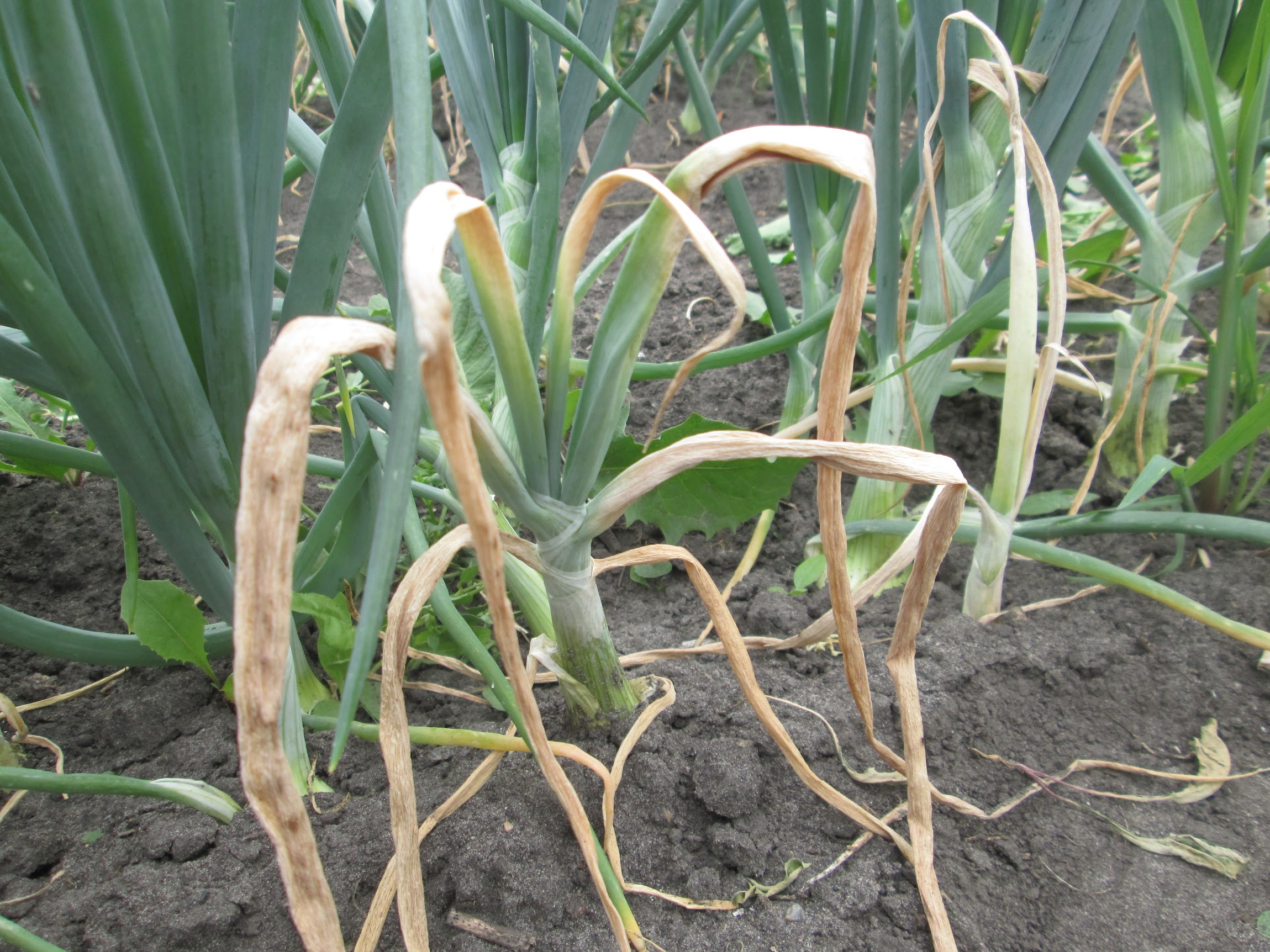
Basal rot in alliums
Affects onions, leeks, garlic, shallots and chives

The prairie heat wave in late July and early August of 2022 saw temperatures above 38°C for a period of about a week. Conditions were ripe for the disease to thrive as soil warmed considerably in the heat. This disease also needs moisture, but in hot weather, watering is a must so keeping soil on the dry side was hard to manage. As a result, some home gardeners lost significant portions of their onion crop. As extreme heat events become more common with climate change, mulch can help keep soil temperatures cooler and potentially stave off the disease.
Symptoms
- Early symptoms are premature tip dieback and yellowing of the leaves
- When onions are pulled, they lack roots, and a pinkish brown rot can be seen at the base end of the bulb
- A white mold may follow at the base of onions especially in moist soil
- Harvest and salvage what you can soon, although onions will be smaller than normal
- Discard any onions with disease symptoms
- Thoroughly cure (dry) onions before you store them
- Store onions in a cool, dry place (maintain temperature at just above 0°C and a relative humidity between 60% and 70%)
- Check stored onions often and remove any that are prematurely sprouting or show signs of rot
- Rotate where you grow onions and other alliums for at least 3 years
- Do not plant leeks, chives, or garlic where you had diseased onions as these are also vulnerable
- Plant non-susceptible crops like lettuce, carrots, celery, or beets where onions have been previously planted
- Buy disease-free onion sets (see below)
- Use a 10 cm (4”) layer mulch on top of soil in between rows to keep soil temperatures cooler, as hot soil temperatures are needed for the development of the disease
- There is no soil treatment for this disease
Yellow onions: Catskill, Courtland, Dulce Reina (Spanish), Expression, Fortress, Genesis, Great Western (Spanish), Lasalle, Montclair, Morpheus, Mountaineer, Oracle, Ridgeline (Spanish), Saddleback, Scorpion, Scout, (Spanish), Sedona (Spanish), Stanley, Sweet Jasper, Traverse, Trekker
Spanish Variety (Red): Red Devil, Red Nugent, Red River, Red Rock, Ruby Ring
Bunching Variety: Green banner
White Variety: Brundage, White Castle
Sources
Disease resistant vegetable varieties. (n.d.). Cornell University, College of Agriculture and Life Sciences. Retrieved 20 May 2022, from https://www.vegetables.cornell.edu/pest-management/disease-factsheets/disease-resistant-vegetable-varieties/
Howard, R. J., & Garland, J. A., Seaman, W. Lloyd. (1994). Diseases and pests of vegetable crops in Canada: An illustrated compendium. The Canadian Phytopathological Society.
Williams, S., & Skinner, H. (2011). Gardening, Naturally. A chemical-free handbook for the Prairies. Coteau Books.

